- Our Products
- Upper Extremity
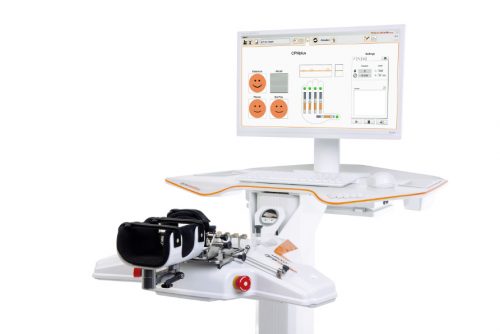 AMADEO The hand therapy world champion
AMADEO The hand therapy world champion
Boredom in finger-hand rehabilitation? Not with AMADEO! Motivation in the course of therapy is just as essential as fingers and hands are for daily life. Regardless of whether it is an adult or child, AMADEO increases therapeutic ambition with sophisticated robotics and a playful approach, and also visualizes the smallest successes in all phases of rehabilitation. Bottom line: AMADEO is simply unique.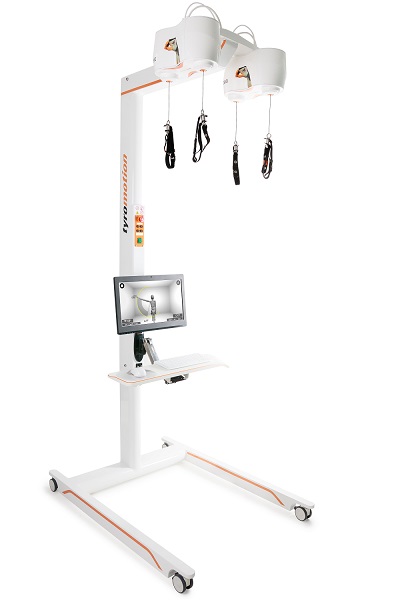 DIEGOBilaterally back to life
DIEGOBilaterally back to life
Finally go fishing again? DIEGO® skilfully assists patients with its unique intelligent weight relief. With its three-dimensional therapeutic area and virtual reality, DIEGO® enables the ideal transfer of what you have learned into everyday life – exactly with the required support. Nothing more and nothing less.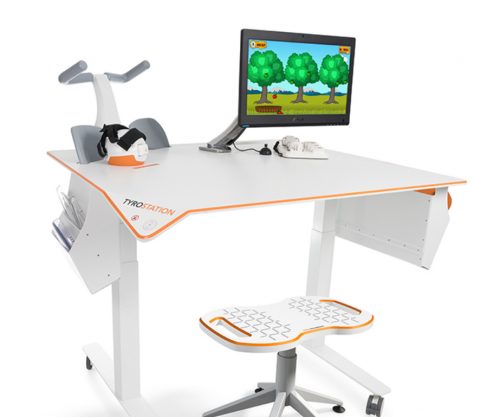 TYROSTATION Endless options, well organized
TYROSTATION Endless options, well organized
Anyone who is as versatile as PABLO® and TYMO® needs structure to really unfold. The Tyrostation is home to all individual components of our two all-rounders and also provides perfect ergonomic adaptability for every patient.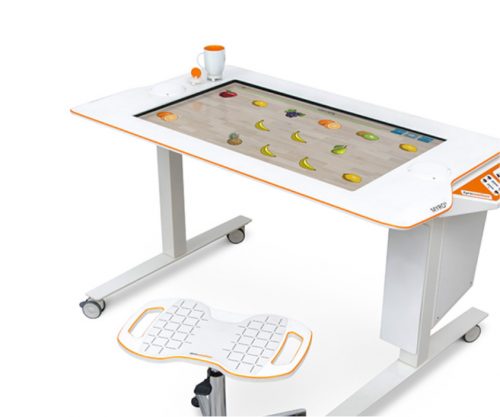 MYRO Full of variety, versatility, innovation and creativity
MYRO Full of variety, versatility, innovation and creativity
Real objects, power control, touch applications and a whole lot of fun: this is what constitutes goal-oriented, intuitive therapy with MYRO. The sensor-based surface is the basis for creative therapy which brings about meaning and self-determination in daily life.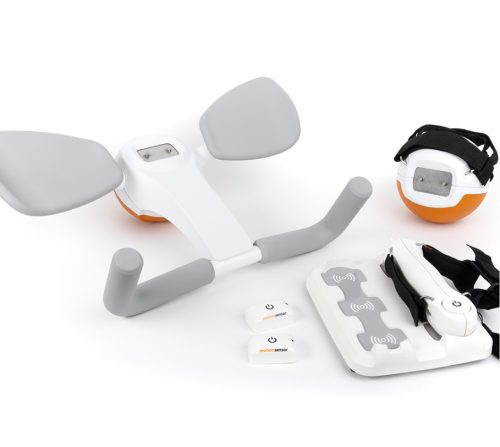 PABLO As versatile as life
PABLO As versatile as life
PABLO® is an all-rounder when it comes to activities of daily living. Position sensors and numerous accessories open up incredibly versatile therapeutic options in a safe environment for patients of all impairment levels.
- Lower Extremity
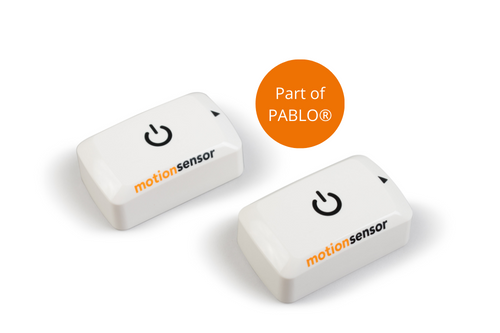 PABLO Lower ExtremityPart of PABLO®
PABLO Lower ExtremityPart of PABLO®
Always know where therapy is going
PABLO® Lower Extremity, our gait analysis and training system, precisely measures the parameters which are required for the selection of the most effective therapeutic measures for gait improvement. Simple and location-independent application as well as size-independent measurement makes the package complete – small device, great effect!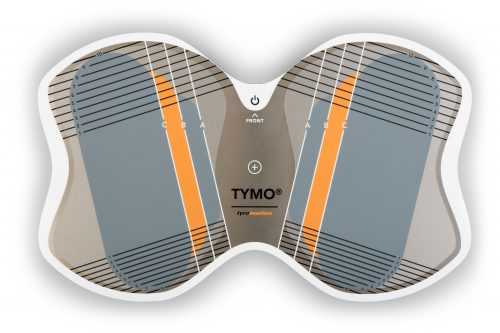 TYMO Balance in perfection
TYMO Balance in perfection
TYMO, a portable posturography system and the world’s thinnest balance platform. Flexible in application, TYMO trains postural control in a sensitive, specific and meaningful manner, and is therefore the basis of all movements. Motivation and fun are included.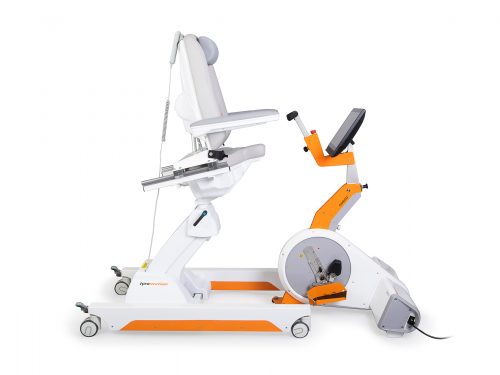 OMEGO Plus Therapy for all phases of gait rehabilitation gone motivational
OMEGO Plus Therapy for all phases of gait rehabilitation gone motivational
Two separate drives mobilize the patient in an effortless, isolated and focussed manner, and therefore make OMEGO® the long-desired stopgap between mobilization and locomotion. What else remains for patient and therapist to do? Train in a motivated manner, have fun and achieve goals.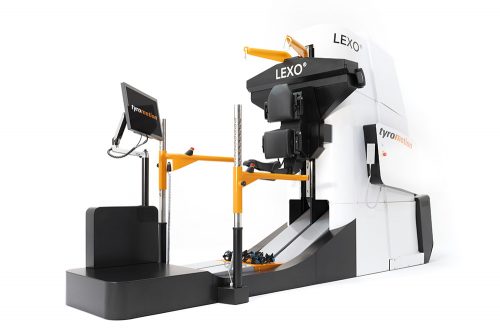 LEXOGait training at its best
LEXOGait training at its best
Maximum number of steps and intensity, low in height, easy handling and fast setup time: Impossible? It works! With LEXO® patients take the first impressive steps back to mobility and enjoy the feeling that things are finally getting better again.
- MTT-Line
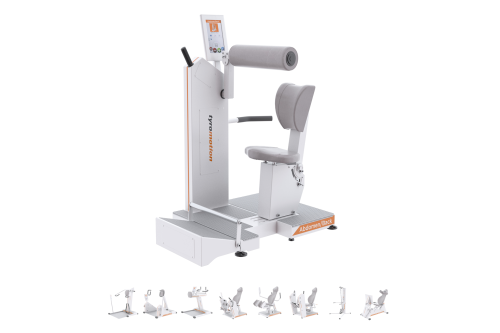 MTT-Line Medical training therapy
MTT-Line Medical training therapy
The barrier-free MTT-LINE specifically strengthens the six major muscle groups of the human body.
- Software
 TyroS The heart of our technology
TyroS The heart of our technology
Our TyroS software – developed by and together with therapists – is the heart of our technology that combines devices, know-how and therapeutic games. It is a sophisticated therapeutic system that helps challenge and encourage patients.
- Upper Extremity
Rehabilitation
How Advanced Rehabilitation Technology helps Spinal Cord and Brain Injury Patients
17. January 2022 ● 3 min. Reading time
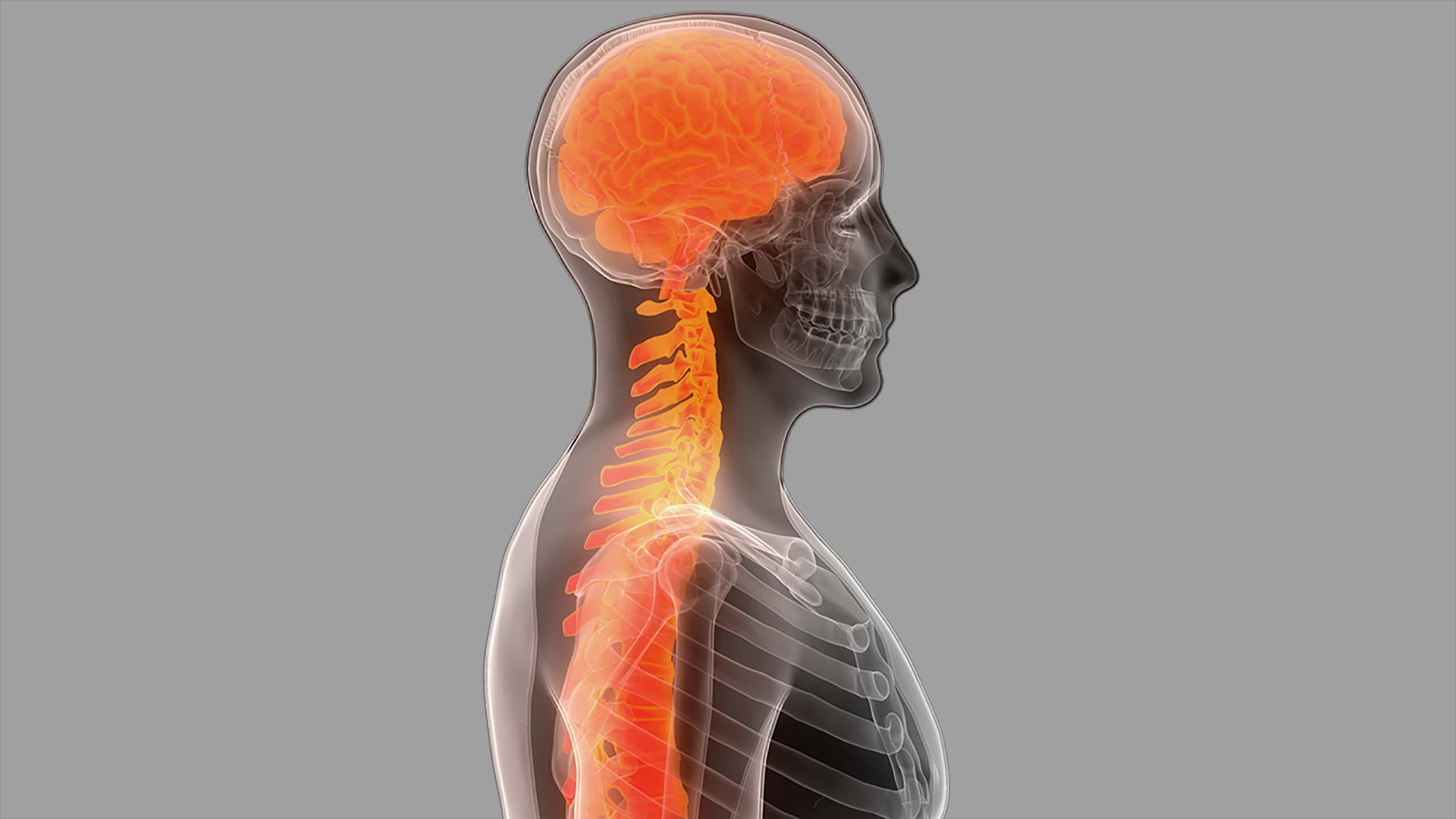
Robotics, sensors, virtual reality, and gamification allow a patient’s attention to divert away from the stress and anxiety of their health problems.
Adjustable devices offer real-time feedback to the therapist and the patient. Data from each device can be analyzed to determine when to increase the difficulty of the exercises and to challenge patients to reach higher goals.
Read on to learn more about how advanced rehabilitation devices can help SCI or TBI patients.
Benefits to Patients with Spinal Cord Injury
Spinal cord injury is the second leading cause of paralysis in the United States. Spinal cord damage can cause a sudden loss of motor function, range of motion, sensation, and strength. Depending on the location and the severity of the damage, the patient can experience mild to moderate limitations in the legs, arms or the whole body. The damage can occur due to an accident or an illness.
While researchers hope to fully repair damaged spinal cords in the future, they haven’t yet developed that ability. In the meantime, physical and occupational therapy can help improve the lives of people affected.
There is evidence showing that activity-based-therapy can improve independence and functional ability for people with SCI. The patient may be able to relearn specific movements and regain skills to help them with activities of daily living (ADLs), such as eating and dressing.
Advanced rehabilitation devices use motor-learning-principles which can help patients to re-establish daily activities. By leveraging the brain and spinal cord’s neuroplasticity, patients can establish new neuropathways and acquire new motor skills.
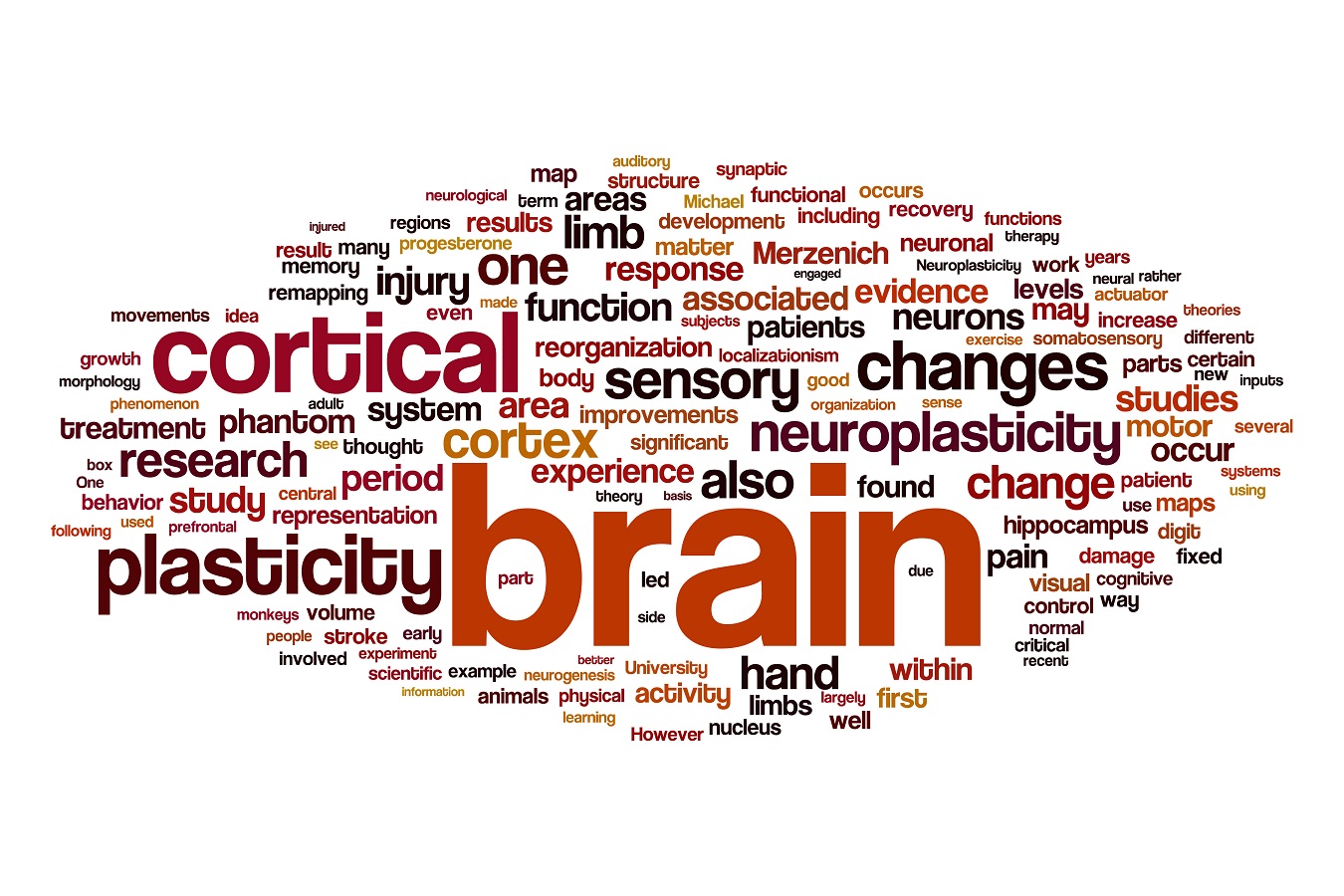
Benefits to Patients with Traumatic Brain Injury
According to the Center for Disease Control and Prevention (CDC), traumatic brain injury (TBI) is a leading cause of disability. Each year an estimated 1.5 million Americans sustain a TBI.
TBIs can occur in many ways, including car crashes, accidental falls, violence, or assault. Regardless of how the injury occurs, patients who experience a TBI often struggle with motor, cognitive and emotional problems. Some of them last months, some years or some may last a lifetime. Statistic shows that approximately five millions TBI survivors sustain long-term neurological deficits.
Advanced rehabilitation technology can support patients in many ways during their recovery. Virtual Reality provides promising results, offering patients an highly emotionally engaging experience.
Assessing and Building Life Skills after Spinal Cord Injury or TBI
Technology-based therapeutic devices can be used to assess and help reduce:
- Deficits in vestibular function and balance
- Impairments of executive dysfunction and memory
- Abnormalities in cognition and attention issues
- Difficulties with motor skills needed to live independently
Advanced rehabilitation technology can inspire patients with spinal cord and traumatic brain injury to persevere. From gait and balance therapy to upper and lower extremity exercises, technology-based devices push the limits of what is possible.
Sources:
Virtual Reality Neurorehabilitation for Mobility in Spinal Cord Injury: A Structured Review (2019)
Report to Congress: Traumatic Brain Injury in the United States (1999)
Virtual Reality for Traumatic Brain Injury (2018)
Virtual Reality Neurorehabilitation for Mobility in Spinal Cord Injury: A Structured Review (2019)
You might also be interested in
4. April 2023
Health
Rehabilitation
Stroke nutrition guidelines for optimal health
Nutrition as the key part in health and well-being of stroke survivors A healthy, balanced …
21. March 2023
Rehabilitation
Kinesio taping in neurology as a useful therapy supplement
The Kinesio tape and its usefulness in neurological therapy What was originally known only from …
7. March 2023
Rehabilitation
Exercises against freezing of gait in Parkinson’s disease
When the legs freeze – how does the symptom “Freezing of Gait” manifest itself? Parkinson’s …








